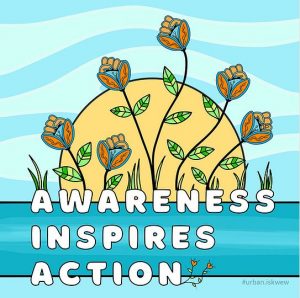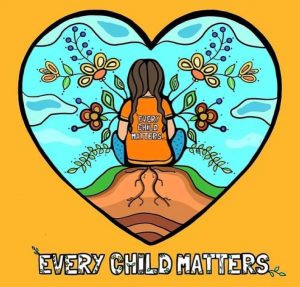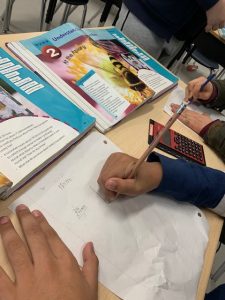 Hmm… it’s interesting that we refer to some of our learning in math as “problems.” Sounds kind of negative, doesn’t it? Problem-solving is about identifying important information and finding solutions to unknown variables. Maybe a better phrase would be “puzzle-solving!”
Hmm… it’s interesting that we refer to some of our learning in math as “problems.” Sounds kind of negative, doesn’t it? Problem-solving is about identifying important information and finding solutions to unknown variables. Maybe a better phrase would be “puzzle-solving!”
Division 3 is working on developing their responses to mathematical puzzle-solving . Our goal is to communicate our thinking clearly using words, numbers, symbols, and pictures when needed. Anyone reading or viewing our responses should be able to track all the steps and calculations used, and even be able to tell what the questions was!
Division 3–what are some things you are including in your page layout, or in what you record on your paper, to make your process clear?
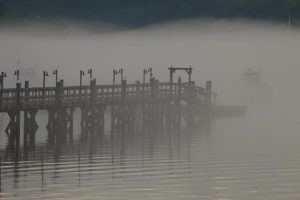 Fog
Fog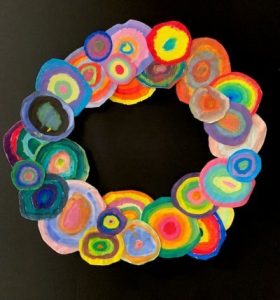 Our class wreath for Remembrance Day is based on Wassily Kandinsky’s work Squares with Coloured Circles (Farbstudie – Quadrate und konzentrische Ringe), 1913. Even though this piece could be considered Kandinsky’s most famous creation, it was not originally intended to be an entire composition. It was a study of how colours interacted with each other in various combinations. Kandinksy was a synesthete–he could hear colours, and see sounds. Colour tells its own story to each person, and to Kandinsky, colour meant more than just a visual component of a picture.
Our class wreath for Remembrance Day is based on Wassily Kandinsky’s work Squares with Coloured Circles (Farbstudie – Quadrate und konzentrische Ringe), 1913. Even though this piece could be considered Kandinsky’s most famous creation, it was not originally intended to be an entire composition. It was a study of how colours interacted with each other in various combinations. Kandinksy was a synesthete–he could hear colours, and see sounds. Colour tells its own story to each person, and to Kandinsky, colour meant more than just a visual component of a picture.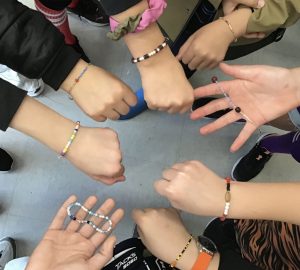 In September students learned how to write numbers in binary (a base-2 number system). Today students learned that letters can also be coded in binary! Each student mapped out their names on grid paper, chose their colours, and beaded their names into a bracelet.
In September students learned how to write numbers in binary (a base-2 number system). Today students learned that letters can also be coded in binary! Each student mapped out their names on grid paper, chose their colours, and beaded their names into a bracelet.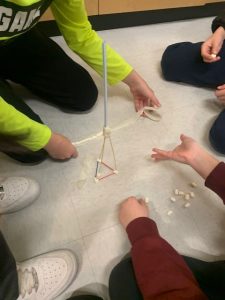





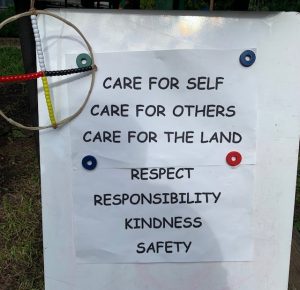 First we looked at the Medicine Wheel, which symbolizes life in a continuous natural cycle. The Medicine Wheel represents the four directions, the four seasons, the four elements, and all of humanity. People are part of the Earth, just as are the plants, animals, air, water, and rocks around us. It is important that we establish healthy relationships with all of these parts.
First we looked at the Medicine Wheel, which symbolizes life in a continuous natural cycle. The Medicine Wheel represents the four directions, the four seasons, the four elements, and all of humanity. People are part of the Earth, just as are the plants, animals, air, water, and rocks around us. It is important that we establish healthy relationships with all of these parts.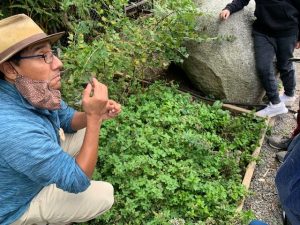 Pablo reviewed the expectations for the garden, and then we got to work harvesting quite a few different types of vegetables!
Pablo reviewed the expectations for the garden, and then we got to work harvesting quite a few different types of vegetables!